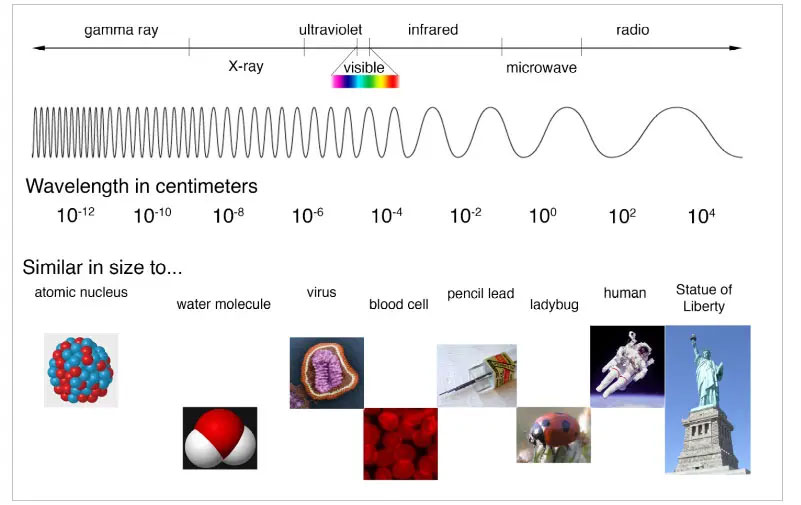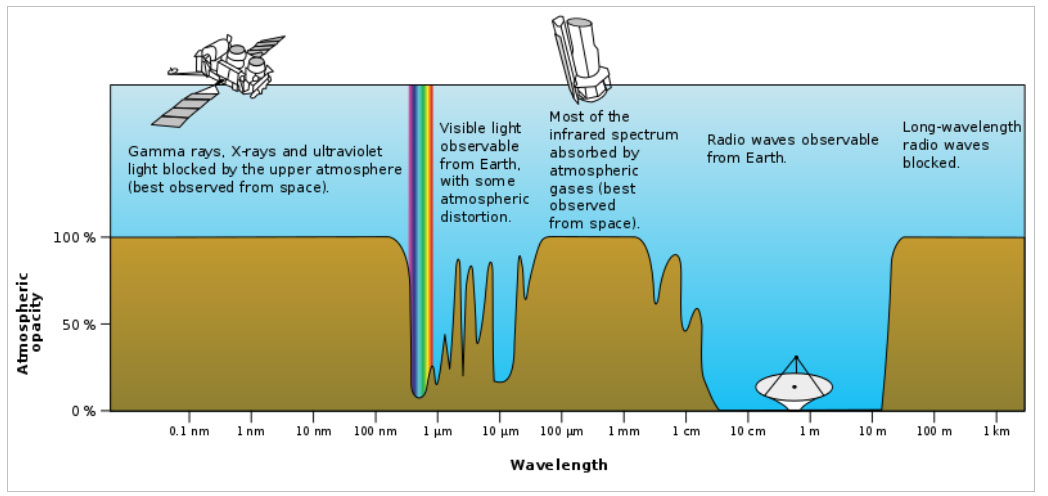Feedback archive → Feedback 2020
Answering question about 5G and COVID-19
G. W. from Australia wrote in with a question about coronaviruses and 5G wireless technology.
Message:
I would like Robert Carter’s biological view on these two assertions:
1) that Coronavirus looks like a viral response to respiratory difficulty, and
2) that 60 GHz radio frequencies can reduce oxygen uptake thus causing that response in the lungs.
I have a congregant who is alarmed. Snopes is quiet and I’m unsure where to look for credibility.

Dr. Robert Carter responds:
G. W.,
Thank you for trusting us enough to write in with such a question.
First, the virus is not a ‘response’ to respiratory difficulty. It is, in fact, an infectious particle that often causes respiratory difficulty. Many people are getting cause and effect messed up, and I believe this is due to nefarious actors on social media. We know what viruses are. We know how they behave in the body. And we know how they can be passed from person to person. To say otherwise is to reject too much science, and much of the medical science we rely on was first developed by Christians like Joseph Lister and Louis Pasteur.
This is a matter of operational science. We can actually know what is going on and everything is based on scientific knowledge that goes back well over 100 years. Yet, this spiders into claims about 5G signals and other conspiracy theories. It is a question of how to think and how we are supposed to approach difficult subjects with a sober, scientific mindset while multiple town criers are trumpeting nonsense from the parapets.
I am going to answer your second question in small steps, defining terms as I go. Some readers will be unfamiliar with the science terminology, and I don’t want to lose people. This is an important topic.
GHz (gigahertz)
A ‘Hertz’ is a unit of frequency, measured in cycles per second. The name comes from the German physicist Heinrich Hertz (1857–1894). Giga means billion. So, 1 GHz = 1 billion cycles per second.
We hear this term a lot when we are talking about computer processors (and it is kind of amazing when you think about it). We also use it a lot when talking about radio signals. It is impractical to use GHz when talking about visible light because the waves oscillate between 430 trillion Hertz (red) to 750 trillion Hertz (violet). However, radio waves are much longer, and so they oscillate much more slowly. Hence, we use GHz when talking about radio, WiFi, and now 5G.
5G
The ‘G’ in 5G has nothing to do with GHz. In fact, 5G just means “5th generation”. The telecommunications community has rolled out several sets of standards over the years and this is the 5th major step. We could not have had 5G devices earlier because we had to wait for technological improvements in many areas. In the 1980s, 1G allowed for simple analogue voice communications. Cell phones worked like a radio and had all the limitations of pre-digital radio broadcasts. 2G brought in digital voice. Then came 3G, which allowed mobile data, and 4G, which was a significant improvement in speed. There is nothing all that different with 5G. It is just faster and more reliable. Part of this is because our devices have faster processors, and so can handle faster data transmission rates. Part of this is because it uses a better part of the electromagnetic spectrum.
The electromagnetic spectrum
Our eyes can only see a narrow slice of the electromagnetic spectrum, from red to blue. Red light has a long wavelength and does not have much power per photon. Blue light has a much shorter wavelength and carries a lot more energy. 5G uses frequencies beyond the red end of the visible light spectrum and so it is biologically safe.1
Beyond red is infrared, which we perceive as heat. Beyond that are radio waves, which we cannot even feel unless you are standing next to an extremely strong transmitter. This can give you an “RF burn”, which just means you absorbed enough energy to dangerously heat up your skin. But since the power of a signal is inversely proportional to the square of the distance, even being a few feet away from a strong signal is generally safe (but the general public are not allowed near transmission stations anyway). Either way, 5G uses a very weak signal.
On the other side of the spectrum, beyond visible blue light, is ultraviolet (UV). UVA is safe. This is the light that is closest to the blue end of the visible spectrum. It is what comes out of a blacklight. UVB is not too bad in small doses. Too much can give you a sunburn. But UVC can much more easily give you cancer. There is so much power in each photon that it can rip apart biological molecules and damage DNA. On the far side of ultraviolet are X-rays, which have the ability to penetrate many substances deeply (partly because the wave is so small) and cause extensive damage at high doses.
Wavelength vs frequency
Light travels at a constant speed (3 x 108 m/s). But it also oscillates at specific frequencies. A high-frequency signal has a shorter wavelength than a low-frequency signal. Thus, there is an inverse relationship between wavelength and frequency. The signals we use for communications have fairly long wavelengths.

Absorption vs wavelength and frequency
The frequencies used for 5G vary from country to country but 3.4, 25, and 60 GHz are common. These line up with the 8.8 cm, 1.2 cm, and 0.5 cm transmission bands, respectively (Figure 3). Note that the X-axis on figure 3 is on a log scale and the wavelengths range from nanometres (billionths of a metre) to kilometres (thousands of metres). A microwave oven operates at 2.45 GHz (with a wavelength around 12.2 cm). This wavelength is strongly absorbed by water. It is also easy to block. That screen you see on the front window of a microwave has small holes in it. Those holes are large enough for visible light to easily pass through, but they block 100% of microwaves. Some people are afraid of microwave ovens, but their effect is only to heat up water molecules. Water easily absorbs light of that wavelength, so this is a very efficient way of heating things that contain water.2 In fact, when you put something in a standard oven, the exact same thing happens. The molecules absorb infrared light and heat up, from the outside only. Do molecules get destroyed or scrambled in a microwave oven? Yes. Does DNA get damaged? Sure enough. But this happens any time you cook food. In fact, you want the proteins to denature and the cells to burst open a little. This is a major reason why cooking your food also kills the bacteria in it.
Higher frequencies also penetrate poorly into the human body, but is any signal penetration dangerous? Actually, no, for the total power is incredibly low. The phone broadcasts with more power than it receives, however. A slight thermal effect has been noted using older 3G phones (a 1 degree temperature rise in the brain after one hour of phone use), and there is ongoing research into non-thermal effects on the body. But, so far, research has failed to show any significant risk.
Even so, the power level of the phone is a billionth of a Watt or less. Without advanced signal processing techniques and vastly improved hardware all of this would be impossible. Higher frequency does not mean higher power.

Interestingly, satellites can measure atmospheric temperature by looking at how much 60 GHz radiation is being produced. The warmer oxygen molecules are, the more they vibrate at this frequency. Thus, part of the controversy surrounding 5G is that atmospheric scientists are worried that they might lose this frequency band for an important aspect of science. On the other hand, you are naturally bathed in 60 GHz ‘radiation’ all the time.
Importantly, a 60 GHz (5 mm) radio signal cannot rip apart oxygen molecules. Oxygen does have a natural vibrational mode at 60 GHz, but to break up a water molecule you need ionising radiation, like x-rays or gamma rays. Thus, anyone saying that water is being ripped apart by a 5G signal does not understand the science involved. Not only that, but there is no evidence that a 5G signal (of any frequency) will interact with oxygen uptake in the lungs, and there are many places that have no 60-GHz 5G signal towers, and others with no 5G towers at all, and yet have high rates of infection.
In the end, some people simply like to be afraid and other people know how to feed off those fears. Thus, crazy or incorrect factoids tend to float to the top of the social media stew. When you apply a general ignorance about how science works and what scientists know, things only get worse. I understand how difficult it is to work with certain people. All I can say is that you need the patience of Job and the wisdom of Solomon. Love them. Educate them as you are able. And may God bless you with the means to convey truth while not getting distracted from your main ministry focus.
References and notes
- Koyama, S., et al., Effects of long-term exposure to 60 GHz millimeter-wavelength radiation on the genotoxicity and heat shock protein (Hsp) expression of cells derived from human eye, Int J Environ Res Public Health 13(8):802, 2016. Return to text.
- Microwaves actually cause water molecules to rotate, while infrared causes them to vibrate. We normally feel vibrations as heat, but it takes time for rotational energy to be dispersed among vibrational modes. Hence the need for standing a bit after microwave cooking. There are other frequencies that water absorbs more easily, but if we used those the signal would all be absorbed at the surface, which would reduce desirable cooking properties. Return to text.





Readers’ comments
Comments are automatically closed 14 days after publication.